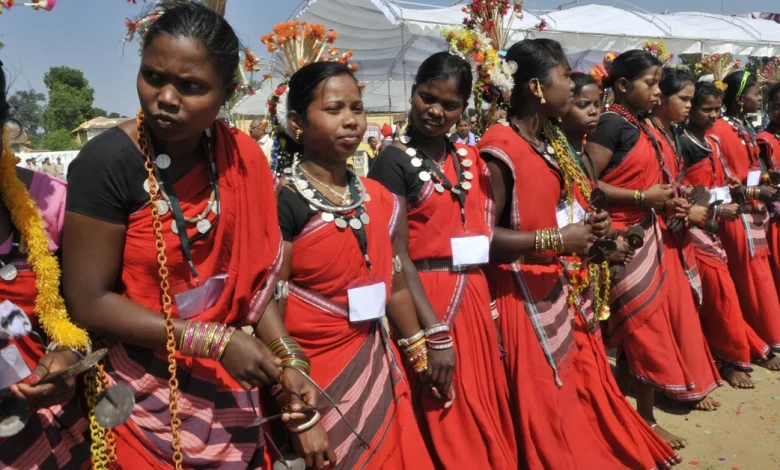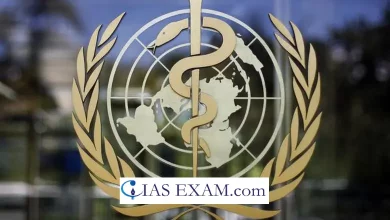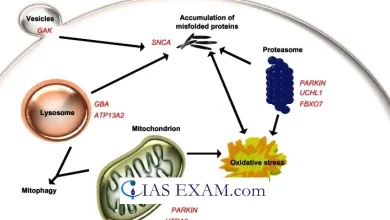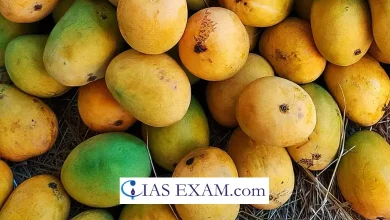Daily Current Affairs for UPSC
Baiga Particularly Vulnerable Tribal Group (PVTG)
Syllabus- Governance [GS Paper-2]

Context- The Baiga Particularly Vulnerable Tribal Group (PVTG) recently became the second habitat right holder in the state after the Kamari PVTG.
Key Highlights
- A total of 19 Baiga villages with 6483 inhabitants (2085 families) received the right of residence.
- The Baiga community lives mainly in the Rajnandgaon, Kawardha, Mungel, Gaurela-Pendra-Marwah (GPM) and Bilaspur districts of Chhattisgarh and also in adjacent districts of Madhya Pradesh.
What are habitat rights?
- Recognition of habitat rights gives the relevant community its own rights
- ordinary residential area,
- sociocultural practices,
- means of economy and livelihood,
- intellectual knowledge of biodiversity and ecology,
- traditional knowledge also about the use of natural resources
- protection and preservation of our natural and cultural heritage.
- Habitat rights protect and promote traditional livelihoods and ecological knowledge passed down from generation to generation
- They also help bring together different management plans and initiatives from different departments so that PVTG communities can develop their habitats.
- Habitat rights are granted to PVTGs under Section 3(1)(e) of the Tribal and Other Traditional Forest Dwellers (Recognition of Forest Rights) Act 2006, also known as the Forest Rights Act (FRA).
- According to Section 2 (h) of the FRA, “habitat includes the area containing the usual habitat and such other habitats in protected forests and protected forests of primitive tribal groups and agricultural communities and other forest-dwelling Swedish tribes.”
Can habitat rights be used to stop activities such as mining?
- Habitat rights help PVTG to protect their habitat from development activities that are harmful to them.
- Title may not be an inherent property right of private property, but all development activities require the consent and consultation of the Gram Sabha.
- Forest rights are legally protected under the Forest Protection Act, the Land Acquisition Act, 2013 and even the Prevention of SC/ST Atrocities Act.
- The granting of habitat rights under the Forest Law provides an additional level of legal protection.
- If any development activity disturbs their habitat rights, the concerned tribal group can refer the matter to the administration under the Forest Act and, if it is not resolved, to the court.
How many states have recognised habitat rights?
- Of India’s 75 PVTGs, only three have habitat rights.
- The Bharia PVTG in Madhya Pradesh was the first, followed by the Kamari tribe and now the Baiga tribe in Chhattisgarh.
- Based on MoTA guidelines, the traditional tribal leaders of the tribe are consulted regarding their culture, traditions and profession.
- The government approves it and then the habitat is declared.
Particularly Vulnerable Tribal Groups (PVTGs):
- PVTGs are the most marginalized and extreme backward sections of the Scheduled Tribes (ST).
- The criteria for identifying particularly vulnerable tribal groups are as follows:
- Pre-agricultural technological level,
- Low literacy,
- Economic backwardness,
- Population decline or stagnation
History of PVTG:
- The Dhebar Commission (1960-1961) found that there was inequality in the socio-economic development of tribal communities.
- In 1975, based on the Dhebar Commission report, the government defined Primitive Tribal Groups (PTGs) as a separate category and listed 52 tribal groups as PTGs.
- Later, in 1993, more tribal groups were added to the list. According to the 2001 census, there are 75 Highly Vulnerable Tribal Groups (PVTG) with a total population of 27,68,322 in 18 states and union territories.
- In 2006, PTGs were renamed PVTGs (Special Vulnerable Tribal Groups).
- In six states namely Madhya Pradesh, Chhattisgarh, Maharashtra, Jharkhand, Andhra Pradesh and Tamil Nadu, PVTGs constitute more than 77 percent of their total population and cover 38 out of 75 PVTGs.
- Among the 75 listed PVTGs, Odisha has the highest number.
- The Saharan tribe of Madhya Pradesh and Rajasthan is the largest tribe in PVTG with a population of over 4 lakhs.
Conclusion:
- PVTGs are one of the most vulnerable regions of the country. Therefore, steps must be taken to empower such tribal groups.
- However, it must be remembered that taking such measures will not disturb the autonomy of the tribes and will take positive steps in preserving their uniqueness.
Source: Indian Express
Practice question:
Q. What is the Pradhan Mantri PVTG (Particularly Vulnerable Tribal Groups) Development Mission?





.png)



